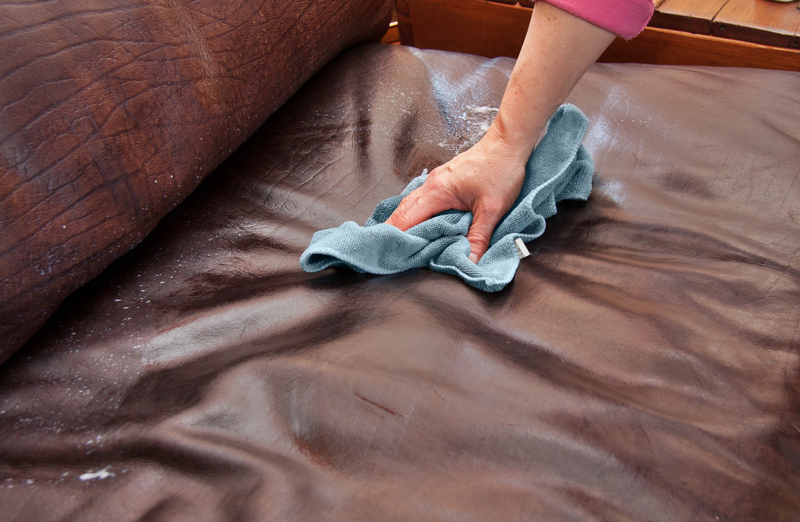Expert Methods to Banish Burnt-on Residues from Stovetops
Posted on 15/06/2025
Expert Methods to Banish Burnt-on Residues from Stovetops
Struggling with tough, burnt-on residue on your stovetop is a common kitchen headache, but you don't have to live with stubborn stains and baked-on spills. Whether you use gas, electric, or glass stovetops, learning effective ways to remove burnt-on residues from stovetops can restore both shine and functionality. In this detailed guide, we'll uncover expert, proven strategies and practical tips for cleaning and maintaining your cooktop like a pro.
Why Burnt-on Residue is a Stubborn Challenge
When you accidentally let food boil over or spill sauces on your stove top, high cooking temperatures caramelize sugars and carbonize food proteins. As a result, these residues bond tenaciously to the stovetop surface. Over time, if not cleaned promptly, they can degrade the stove's appearance, emit lingering odors, and even impact cooking performance.

The Importance of Regular Stovetop Cleaning
- Prevents surface damage: Immediate cleaning avoids pitting or staining of surfaces, especially on glass and enamel cooktops.
- Improves kitchen hygiene: Removing grease and burnt-on food prevents the buildup of bacteria and mold.
- Enhances appliance longevity: Consistent cleaning keeps your stove working efficiently and looking newer for longer.
- Preserves food flavor: Eliminating residues prevents flavor contamination of dishes prepared on the same stove.
Types of Stovetop Residue and Surfaces
Before diving into expert cleaning methods, it's helpful to identify your stovetop type and the kind of burnt residue you're facing:
- Gas stovetops: Residues may occur on grates, burners, and enamel or stainless steel surrounds.
- Electric coil stovetops: Spilled food can become baked onto the metal rings and drip pans.
- Glass ceramic (induction or smooth-top) stovetops: Especially vulnerable to scuffs and stains; require delicate approaches.
Preparatory Steps for Safe Burnt-on Residue Removal
_Always begin with safety in mind._ Power off the stove completely and allow it to cool down. If you're planning to remove grates or knobs, consult the appliance manual for guidance. Gather the following cleaning essentials:
- Non-abrasive sponges or microfiber cloths
- Rubber gloves for hand protection
- A bowl or bucket of warm, soapy water
- Baking soda, white vinegar, and dish soap
- Plastic or silicone scraper (never use metal on glass)
- Lemon juice, if natural cleaning is preferred
- Store-bought cooktop cleaner (for tough jobs)
Expert Methods to Clean Burnt-on Residue from Stovetops
1. Baking Soda and Vinegar Method
A time-tested, eco-friendly technique for all stovetop types, combining the mild abrasiveness of baking soda with vinegar's degreasing power:
- Sprinkle baking soda generously over the burnt-on area.
- Spritz with vinegar (white vinegar works best) until it fizzles--this helps lift the residue.
- Let the mixture _sit for 15-30 minutes_ to allow it to break down stubborn stains.
- Gently scrub with a non-abrasive sponge or cloth in a circular motion.
- Wipe clean with a damp microfiber towel.
2. Utilizing Commercial Stove Cleaners
When home remedies don't cut through severe burnt-on gunk, specialized stovetop cleaners can save the day. These are usually formulated for ceramic, glass, or stainless steel surfaces.
- Apply a small amount of cleaner directly to the residue.
- Use a soft cloth or the applicator provided to gently buff the stain.
- Follow up by wiping with a _damp, clean rag_ to remove chemical residue.
- Pro tip: Always check product compatibility with your stovetop material.
3. Hot Soapy Water Soak
This straightforward method works beautifully on removable parts like burner grates, drip pans, and knobs:
- Place grates or pans in a tub or sink filled with hot, soapy water.
- Let soak for at least 30 minutes to soften burnt-on food.
- Scrub with a nylon brush or sponge, paying attention to crevices.
- Rinse and dry thoroughly before replacing.
4. Razor Blade Scraping for Glass Stovetops
For glass or ceramic cooktops, a single-edge razor blade (used cautiously!) is remarkably effective.
- Hold the razor blade at a 45-degree angle and gently scrape the residue.
- Apply light pressure--avoid gouging the glass.
- Follow with a specialized glass cooktop cleaner for a polished finish.
Warning: Never use metal scrapers on enamel or stainless steel as they may scratch or chip the surface.
5. Lemon Juice and Salt Power
- Squeeze fresh lemon juice onto the burnt area and sprinkle with coarse salt.
- Let the mixture sit for up to 15 minutes.
- Use a damp cloth to scrub--lemon's acidity and salt's abrasive texture break down stubborn stains.
6. Ammonia for Extreme Buildup
If you're facing intense burnt-on grease, especially on grates and burners:
- Seal the dirty parts in a plastic bag with a small bowl of ammonia.
- Let them sit overnight--the fumes will dislodge burnt matter.
- Remove and wash thoroughly before replacing.
*Only perform this method in a well-ventilated area; never mix ammonia with bleach.
Special Considerations by Stovetop Type
Glass and Ceramic Stovetops
- Only use cleaners recommended by the stove's manufacturer.
- Avoid any cleaning pad with metal fibers; these will scratch the smooth surface.
- Maintain shine with a final wipe using vinegar and a microfiber towel.
Gas Stoves
- Burner caps can often be removed and scrubbed separately.
- Check igniter holes for blockages; use a soft brush, never a toothpick or metal tool.
- Enamel coated grates withstand scrubbing; uncoated cast iron must be dried thoroughly to prevent rust.
Electric Coil Stoves
- Switch off and unplug coils before cleaning.
- For severe buildup, coils may be replaced economically.
- Drip pans are typically dishwasher safe for convenient, deep cleaning.
Preventing Future Burnt-on Residues
Regular upkeep takes less time and effort compared to deep cleans for burnt-on gunk. Here's how to keep your stovetop spotless and stain-free:
- Wipe spills immediately: As soon as the surface cools, clean up any splatters.
- Use stove covers: For high-frequency cooking, silicone stove protectors can minimize mess.
- Adopt gentle cleaning routines: A daily spritz with diluted vinegar keeps grease at bay.
- Choose proper cookware: Pots with flat, clean bottoms cause fewer spills and uneven heating.
- Deep clean weekly: Remove burners, grates, or drip pans to scrub away emerging buildup before it gets tough.
Expert Stovetop Cleaning Mistakes to Avoid
- Avoid harsh abrasives: Steel wool, scouring pads, and heavy-duty powders may permanently scar your cooktop.
- Don't soak gas burner parts with electrical components.
- Never mix ammonia and bleach: This creates toxic fumes.
- Don't use glass cleaners on a hot ceramic or induction surface: It can cause cracking.
- Never reassemble damp burner parts: Let them dry fully to prevent corrosion and electrical faults.

Frequently Asked Questions on Burnt-on Stovetop Residues
How often should I deep clean my stovetop?
For most households, a weekly deep clean will prevent the buildup of tough, burnt-on residues. In heavy-use kitchens, consider a quick wipe after every meal.
Can I use oven cleaner on my cooktop?
_*Usually not.*_ Oven cleaners are often too caustic for modern stove surfaces, especially glass or enamel. Always refer to your manufacturer's guidelines.
Is it safe to use a razor blade on every stovetop?
No--only on approved glass or ceramic surfaces, and always with gentle, controlled motions.
What's the best way to clean gas burners?
Soak removable burners and grates in soapy water, use a soft brush for detail cleaning, and dry thoroughly.
How do I get rid of burnt sugar or caramel on the stove?
Try the baking soda and vinegar paste, or use a razor blade on glass tops after softening the residue with hot water.
Conclusion: Savor a Spotless Stovetop
Maintaining a pristine stovetop free from burnt-on residues is entirely achievable with the right tools, cleaning techniques, and preventive habits. From eco-friendly home remedies to professional-grade products and tested expert advice, you can keep your cooking area spotless and shining. Remember: Consistency is key--regular upkeep means less scrubbing later!
By following these expert stovetop cleaning methods, your kitchen will not only look better, but your appliance will perform its best for years to come. Banish burnt-on residues for good and reclaim the joy of a sparkling, welcoming kitchen!
If you found this guide helpful, share it with fellow home cooks or bookmark for future reference. Happy cleaning!




